A pattern developed exclusively by Alun Rees of South Wales for sea trout fishing in low clear or slow water. He assured me that he gave it the name because after developing it and refining it before finally arriving at the finished article, for sea trout fishing you really shouldn't leave home without it. I treated this very bold statement with my trademark cynicism. Upon trying it myself however, it actually far exceeded what had been stated about it. Fished on a dropper above my favoured tube fly, the fish swam merrily past the tube and took this fly. Fished on a dropper above my favoured snake fly, the fish swam merrily past the snake and did the same. It has done for well over half of my own sea trout this season so far and still going strong. I have adopted it as my own and it is growing in popularity on my own northern rivers Ribble and Lune where my mates are going mad for them. The main reason for this is I cannot keep my big gob shut about its success.
The Dressing
Hook: Extra long shank size 6 to size 10. My own personal preference is a Fulling Mill Traditional Streamer Hook Size 8.
Thread: Black
Body: Tying silk
Rib: Wide silver tinsel
Hackle: Scarlet dyed hen
Wing: 5 strands on peacock sword over a slim bunch of black dyed fox squirrel tail fibres.
Tying Method
Step 1: Secure the hook in the vice with the point protruding.
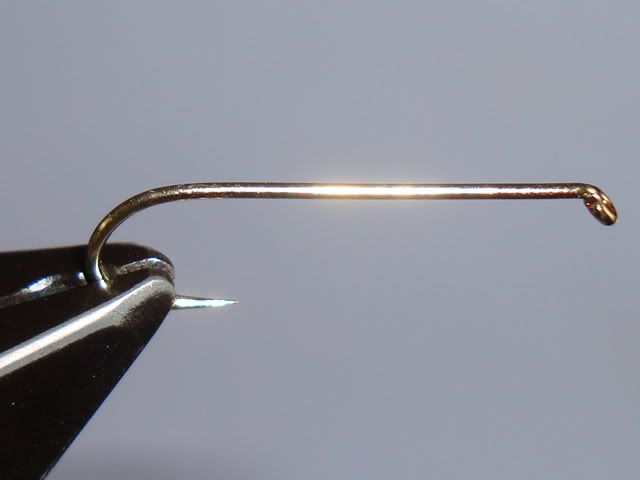
Step 2: Attach black tying thread behind the eye.
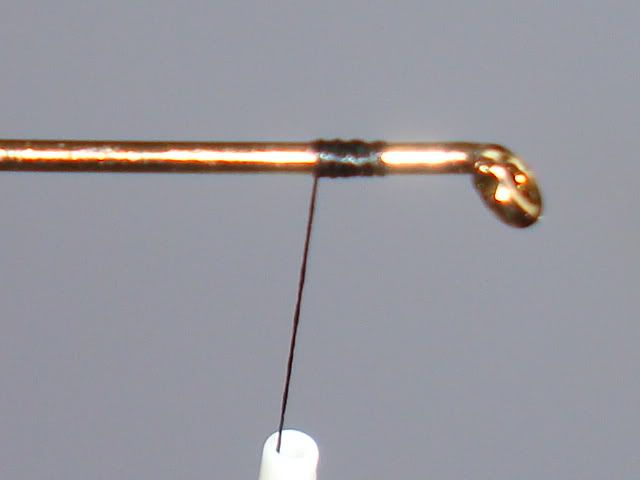
Step 3: Cut a length of broad flat silver tinsel to a point as shown.
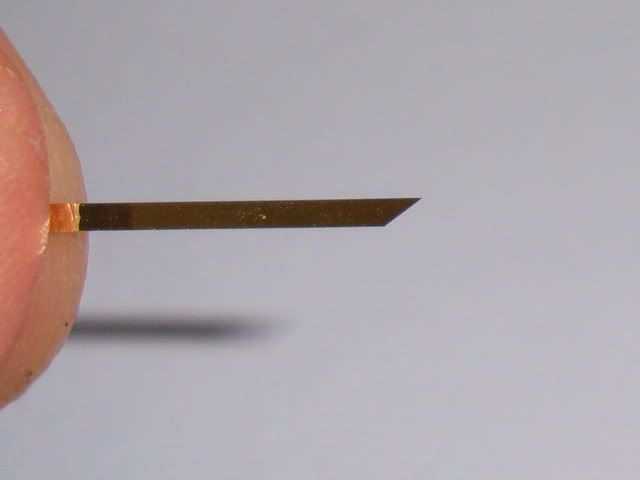
Step 4: Catch in the tinsel by the point securing with 2 turns.
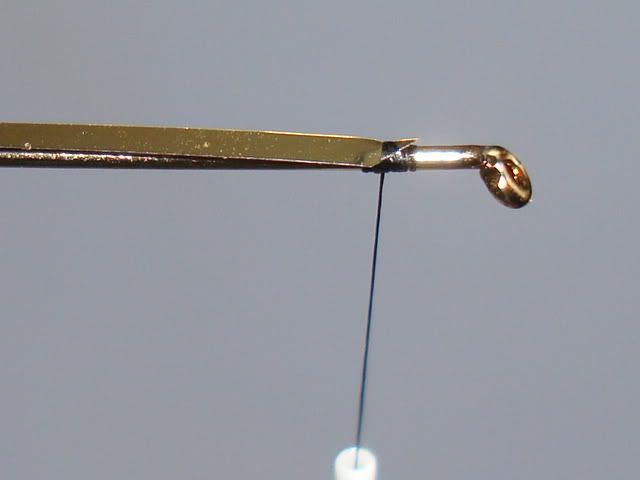
Step 5: Wind the thread back to the end of body. Typically this should be a little more than half the length of the hook shank.
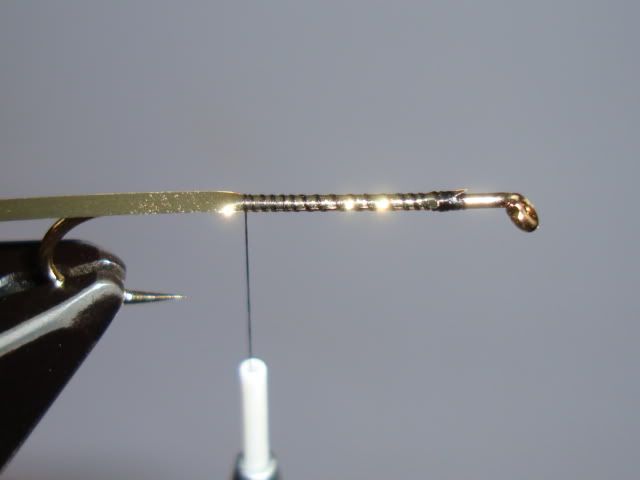
Step 6: Wind the thread in touching turns to point behind the eye to form body.
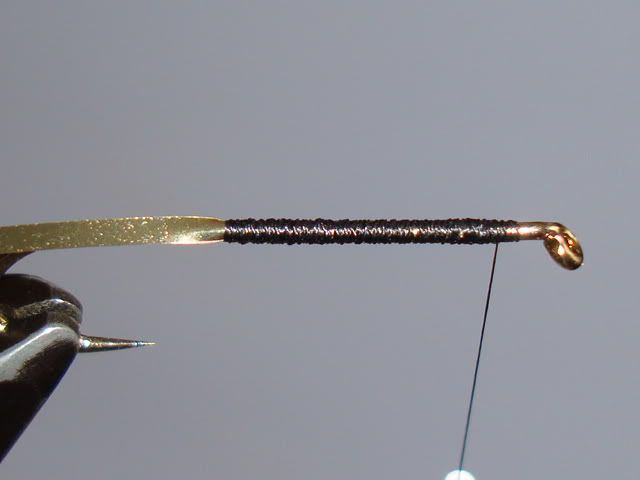
Step 7: Wind the tinsel in close open turns to form rib.
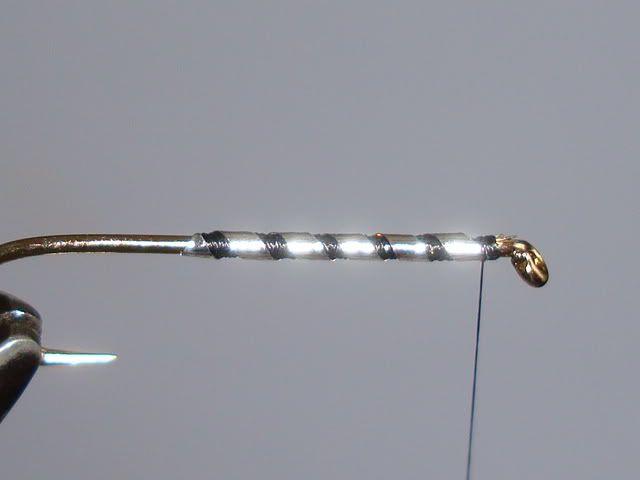
Step 8: Invert the hook and tie in a bunch of scarlet dyed hen hackle fibres. Ideally the length should be equivalent to the fly body.
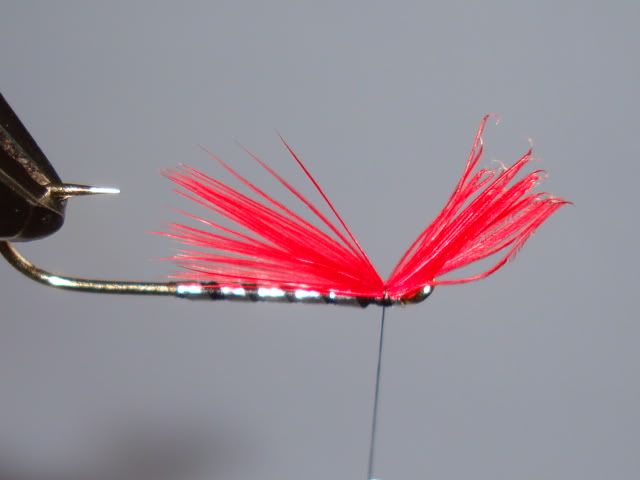
Step 9: Trim waste ends and tie down butt ends. 'Right' the hook and ensure that the hackle sits true.
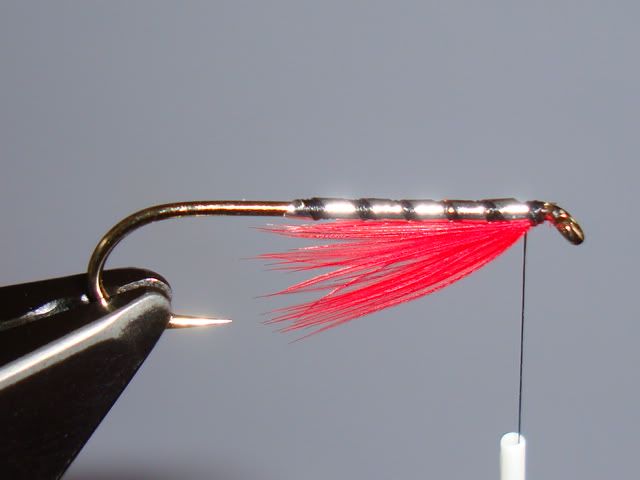
Step 10: Tie in a slim bunch of black dyed fox squirrel tail fibres flat over the back of the fly.

Step 11: Tie in a bunch of 4 or 5 peacock sword fibres over the squirrel tail. Ensure that the natural curve of the sword drapes the hook shank.

Step 12: Whip finish.
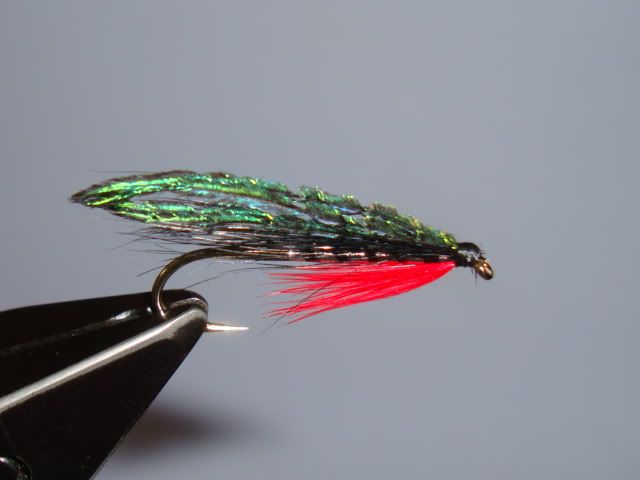
Step 13: Varnish to complete.
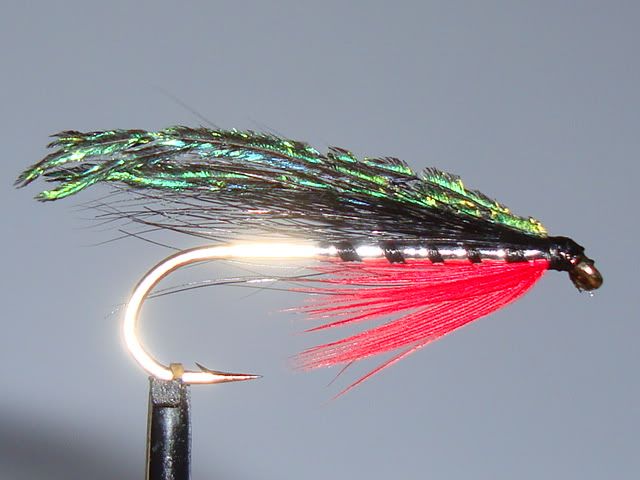
Step 14: This evenings batch ready to get stolen by mates, lashed into bushes on the opposite bank of the river, lashed into bushes on my side of the river, lost in trees, lost in..................
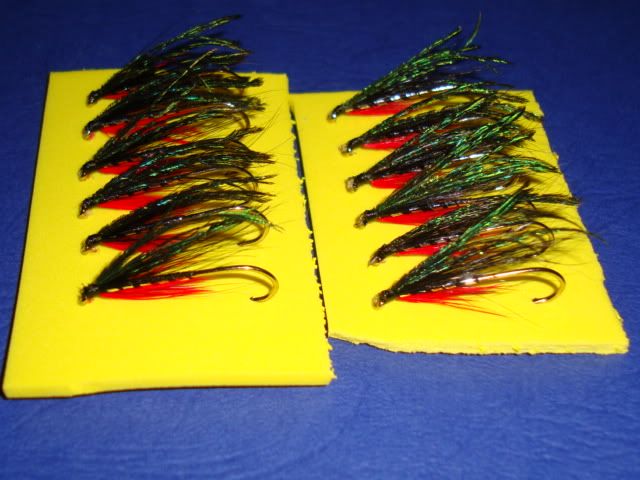
my bloody finger which I impaled with one last Saturday night :
The Dressing
Hook: Extra long shank size 6 to size 10. My own personal preference is a Fulling Mill Traditional Streamer Hook Size 8.
Thread: Black
Body: Tying silk
Rib: Wide silver tinsel
Hackle: Scarlet dyed hen
Wing: 5 strands on peacock sword over a slim bunch of black dyed fox squirrel tail fibres.
Tying Method
Step 1: Secure the hook in the vice with the point protruding.

Step 2: Attach black tying thread behind the eye.

Step 3: Cut a length of broad flat silver tinsel to a point as shown.

Step 4: Catch in the tinsel by the point securing with 2 turns.

Step 5: Wind the thread back to the end of body. Typically this should be a little more than half the length of the hook shank.

Step 6: Wind the thread in touching turns to point behind the eye to form body.

Step 7: Wind the tinsel in close open turns to form rib.

Step 8: Invert the hook and tie in a bunch of scarlet dyed hen hackle fibres. Ideally the length should be equivalent to the fly body.

Step 9: Trim waste ends and tie down butt ends. 'Right' the hook and ensure that the hackle sits true.

Step 10: Tie in a slim bunch of black dyed fox squirrel tail fibres flat over the back of the fly.

Step 11: Tie in a bunch of 4 or 5 peacock sword fibres over the squirrel tail. Ensure that the natural curve of the sword drapes the hook shank.

Step 12: Whip finish.

Step 13: Varnish to complete.

Step 14: This evenings batch ready to get stolen by mates, lashed into bushes on the opposite bank of the river, lashed into bushes on my side of the river, lost in trees, lost in..................

my bloody finger which I impaled with one last Saturday night :


Comment